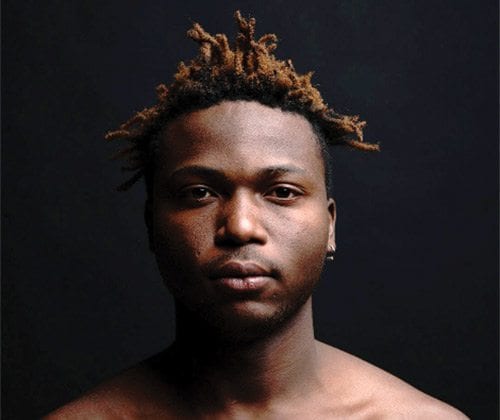Check all that apply
Nicole Buchanan exhibit blows away racial stereotypes

African American, Caucasian, Hispanic, Asian. We all are categorized daily. The checkboxes tell us who we are allowed to be. Generalizations are used to sort the population, then appropriate treatment is administered. Nicole Buchanan’s show “In the Skin I’m In,” showing at Gallery Kayafas through July 2, uses subtlety and comparison to show just how narrow these boxes are.

Author: Photo: Courtesy Gallery KayafasNicole Buchanan’s show “In the Skin I’m In,” is on display at Gallery Kayafas through July 2.
The three walls of the exhibit showcase a series of simple portraits. While studying at RISD, Buchanan sent out a call for portraits for anyone who identified as African American. She photographed 50 of the individuals who responded in exactly the same way, against black backgrounds with lighting emphasizing the left side of the face. All the subjects are nude, photographed from the shoulders up with no distractions save for the occasional piercing or tattoo.
Fine details
Despite the very simple parameters of the work, the show is anything but boring. In the sameness we see the differences. The photographs call for focused attention, and allow viewers to see things that are otherwise overlooked, the texture of the skin, the polish of a nose ring, the softness of the subject’s eyes. Because the photographs are placed side-by-side, they allow for comparison that further shows their differences. This comparison is key to getting the most out of the exhibit.
Portrait 16 shows a woman bathed in shadow. Her hair drapes in front of her eyes, darkening the light on her face. Her lips are unsmiling, even downturned. Her eyes look forlornly at the viewer. Each portrait is looking directly at the camera but there is no spark in her eyes, no crease from a smile. Her skin is lighter than the subjects on either side of her, and the softened light hitting her face gives the photograph a Raphael quality. Next to her, portrait 17 assaults the viewer like a bronze sculpture. Her gaze is challenging, her ebony skin shines in the light that is uninhibited by her short hair. Her eyes are wide and instead of retreating into the dark background, she bursts from the frame with life and power. When viewed alone she might look more relaxed, but compared to 16 she vibrates with energy.
Seeing these people in such close quarters, in such a naked, vulnerable manner, makes it impossible to see them as anything but individuals, as anything but human. No one feature is the same amongst the portraits; no skin color quite the same as the others. One wall houses an enlarged portrait of a man. It’s bigger in scale by at least four times that of all the other portraits. The man pictured has coarse hair, a wide nose, and dark skin. From a lens of ignorance and racial blindness, he could be categorized as a “typical” black man. But on looking at the portrait you see his birth marks, the nicks in his skin from years of life, the way his eyes crease ever so slightly at the edges in a way that no one else’s do.
Buchanan’s exhibit takes the glasses of prejudice off the viewer. She takes the identification box that says “African American” and blows it wide open. She reminds us that no two individuals of any race are the same, and that we deserve to be treated as humans, and as equals.




![Banner [Virtual] Art Gallery](https://baystatebanner.com/wp-content/uploads/2024/04/NJ-H_1-713x848.jpg)

